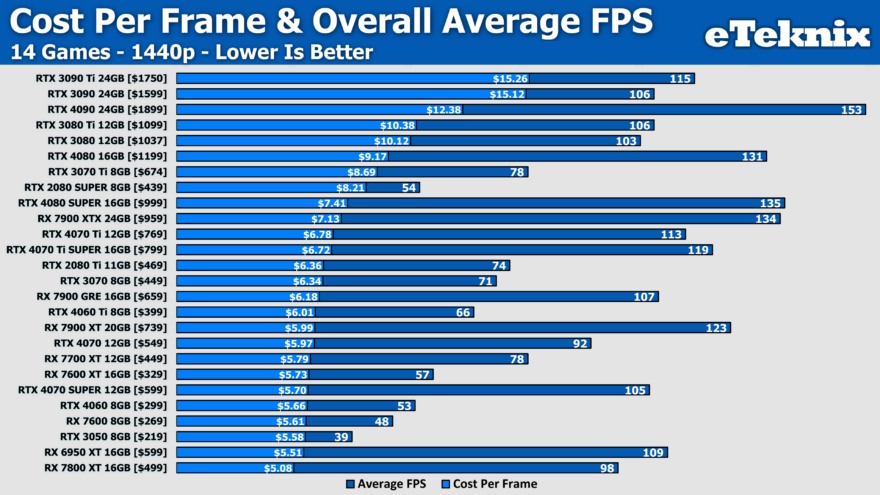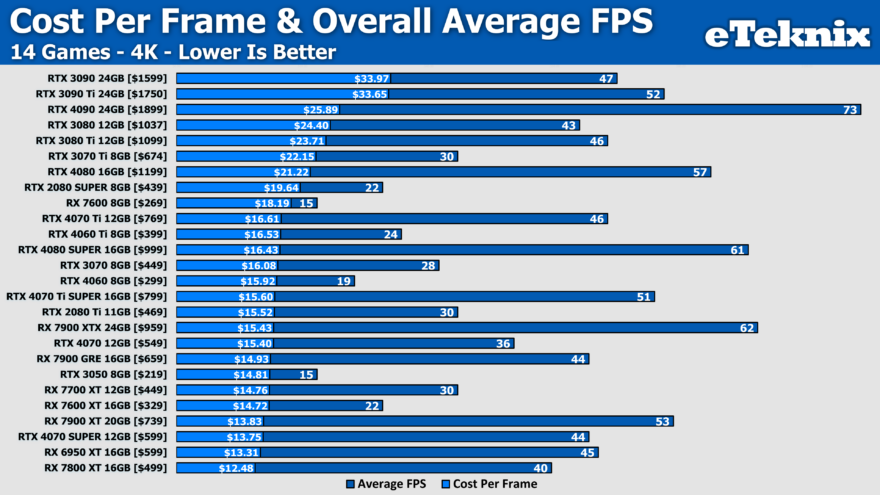Sapphire RX 7900 GRE Edition Graphics Card Review
Cost Per Frame & Overall Average FPS

It’s here where at 1440p the 7900 GRE doesn’t fare that well, coming in at $6.18 per frame which puts it between the RTX 4060 Ti and RTX 3070. This also means that it’s 19 cents per frame more than the more expensive 7900 XT at its recently reduced $739 price tag. In comparison to the cheaper 7800 XT, that is still the best value GPU from both AMD and NVIDIA at $5.08 per frame which puts it just over $1 per frame cheaper. There’s always the argument that the 7800 XT is firmly aimed at 1440p gamers, while the 7900 GRE is more aimed at both 1440p and 4K so it may do better at the higher resolution. What’s also worth noting is that the RTX 4070 SUPER comes in 48 cents cheaper per frame and arguably gives more functionality and better performance in Ray Tracing titles and with a big focus on upscaling that AMD are still behind on. It will cost you more money, but an MSRP 4070 SUPER like the FE from NVIDIA actually comes in at the same $599 price tag as the Nitro model we have here today so they are both comparatively priced.

As we move up to 4K, as expected, nothing really changes. The 7900 GRE now comes in at $14.93 per frame which puts it more expensive than both the 7900 XT and 7800 XT as we saw at 1440p. Again, NVIDIA’s 4070 SUPER is thrown into the mix and does come in $1.18 per frame cheaper, and again creates quite a tricky argument depending on your needs, especially as the overall average FPS is identical on those two cards. Even at the higher resolution, it’s still very clear to see that the 7800 XT, which also is only separated by a few frames per second, is the better buy due to its aggressive price point even if it does fall short in quite a few games at the higher resolution.








